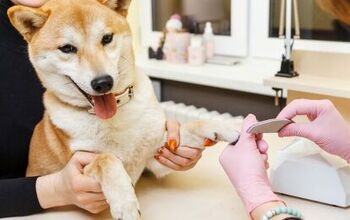My Dog is Getting Older–Should I Get a Second Dog Now?

Two dogs can be twice the joy. Before taking the plunge, however, carefully consider several factors.
Your dog’s health
Any major transition in the household, such as a new family member, is stressful to a dog. If your senior dog is still healthy and alert, he can likely cope with the addition of a suitable second dog. However, if your current dog has a health condition that compromises him physically or mentally, the stress of a second dog could have a negative impact on his health and well-being.
Related: On-Leash Dog Greetings: Yea or Nay?
Your dog’s activity level
Does your senior dog still play like a puppy? If so, he might enjoy a young canine companion in the house. On the other hand, if your current dog is a couch potato with little interest in playing, a young sibling could easily pester and stress him. This doesn’t mean you can’t bring another dog into your family, but look for a dog with an energy level that is compatible with your senior. There are countless adoptable adult dogs looking for homes, many of whom would ease into a quiet lifestyle much more seamlessly than a rowdy puppy or adolescent dog.
Your dog’s sociability
As dogs age, many of them become more selective when choosing playmates. Sometimes a playful puppy can turn into a loner by adulthood. There’s nothing wrong with having a dog who prefers to be alone, just as there’s nothing wrong with a person who would rather stay home and watch movies than go out dancing. If your current dog isn’t very dog-friendly, you can still get a second dog. However, it’s critical to schedule a meet-and-greet between your senior dog and any potential second dog, to see if they have chemistry. If you choose to add a dog-friendly dog to your family, be prepared to take him to dog parks or play groups, so he can find suitable playmates.
Related: How Dog-Loving Strangers Ruin Well-Trained Dogs
Your budget
Make sure you don’t get in over your head with the cost of having two dogs. Senior dogs can be expensive, as health issues pop up and are sometimes chronic. Puppies are also expensive, due to frequent vet trips for routine vaccinations, spay/neuter procedures, and the occasional puppy-related accidents that tend to occur. Puppies and adolescents also tend to require training classes, more equipment due to growing (or eating the old harness!), and replacing chewed clothing or furniture. Middle aged dogs tend to be the lowest maintenance.
Don’t forget your family’s feelings, either. It’s important that everyone in the family is on the same page regarding whether to adopt a new dog, and what kind of dog to look for. Hash out the details with your whole family before even starting your search for a second dog. Make a list of qualities that your new dog should have in order to suit your family, and stick to the list. You want to avoid falling in love with a dog you’ve seen online but who is a poor fit for your lifestyle.
Your time to train and monitor
How much time can you dedicate to a new dog? If your current dog is older, he probably isn’t interested in jogs or long walks, meaning that you might be walking your two dogs separately. Your new dog will also likely need some training, which takes time and consistency. In some cases, your two dogs will need to be monitored while they are together, and separated while you’re not there. Can your schedule accommodate these things?
Adopting a second dog can be one of the most rewarding experiences in a dog-lover’s life, but remember to choose a dog using your head and not just your heart.

Kate Naito, CPDT-KA, is a dog trainer at Doggie Academy in Brooklyn, NY, and author of the training book, "BKLN Manners." She draws upon her experience as an educator and dog trainer to apply positive training techniques to a challenging urban environment. Kate is a rescue advocate drawn to special-needs dogs and currently has two Chihuahua mixes, Batman and Beans.
More by Kate Naito























